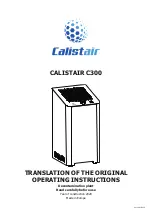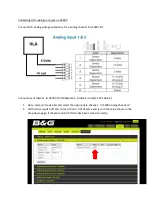
5 Modulation Matrix
One of the biggest strength of subtractive synthesizers
is their ease of use. The pitch, timbre and volume of a
sound and its progression over time can be controlled
in a simple and straightforward way. The simplicity is
achieved by employing a fixed structure with a limited
set of parameters, however.
In order to create more complex patches, modern
synthesizers offer a modulation matrix, where you can
choose from a set of sources and link them to almost
any sound parameter:
The modulation matrix in Dune is located in the center
of the interface, and accessed by clicking on the Mod
Matrix button. Up to 32 source/destination combina-
tions are possible per patch.
Most importantly, the sources comprise the LFOs.
The ability to link a LFO to any sound parameter
makes the traditional LFO destination parameter ob-
solete and offers far greater flexibility. Classic desti-
nation parameters include Pitch (to obtain a vibrato
effect), Volume (to obtain a tremolo effect) as well as
Filter Cutoff. Further sources include the graphical
envelopes (MSEG 1-4), which also must be assigned
to a destination in the modulation matrix to work.
Typical destinations for the graphical envelope genera-
tors include pitch, volume, or the amount of frequency
modulation (FM) when using FM synthesis.
The modulation matrix is also used to assign MIDI
performance controllers to sound parameters.
The
modulation wheel or expression pedal, for instance,
can be chosen as a source and linked to any desti-
nation parameter. The effect of note velocity is also
controlled from within the modulation matrix. While
typically linked to volume, it can be easily set to affect
the filter cutoff frequency or other sound parameters.
Advanced users will appreciate the ability of the
modulation matrix to modulate itself, by choosing any
of the 32 modulation slots as a destination.
57
DUNE 2 User’s Manual
Summary of Contents for DUNE 2
Page 1: ...User s Manual...
















































